Return to May/June 2013 articles.

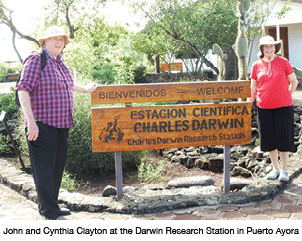
There are many famous places throughout the world, where the location provided mankind with conditions that led to major discoveries. Yellowstone National Park has given us an opportunity to study and understand how volcanic areas can have water moving in and around the magmas that produce the heat, and this has led to many understandings of how mineral resources are produced. Okefenokee Swamp in southern Georgia has let us understand how anaerobic conditions (without oxygen) could produce coal and peat. Death Valley in California and the Great Salt Lake in Utah have taught us how evaporate deposits can form such as the ones under Detroit, Michigan. Perhaps no area is more famous however, than the Galapagos Islands.
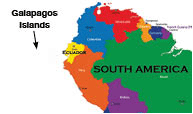
The Galapagos Islands are located some 600 miles west of the coast of Ecuador. They were made famous by the studies and work of Charles Darwin who visited the islands in 1835 at the age of 26 and did exhaustive studies of the flora and fauna of the area. His studies led him to some understandings which violated the religious traditions of his day. They also were seized upon by some philosophers to justify a belief system that rejected God and depended on naturalism as the faith upon which they lived their lives.
Our visit to the Galapagos Islands was made possible by a wonderful medical missions program called “Operation Ecuador” (see www.operationecuador.org) directed by Kent and Joshua Marcum. They send medical mission teams into the bush to address the physical needs of indigenous people living in the interior of Ecuador. They also operate The Quito School of Biblical Studies, minister to a large congregation in Quito, and operate a school and care facility for children called The Hacienda of Hope and Camp Bellevue. My reason to visit was to teach in all of these works, and then to accompany returning medical mission workers to the Galapagos, where they could recover from their work and we would learn together and see the basis of the work of Charles Darwin.
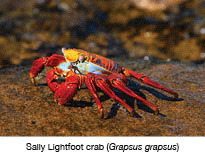
In 1959 the Galapagos National Park was created, and the Charles Darwin Foundation was formed under the sponsorship of UNESCO. In 1964 the Charles Darwin Research Station was established, and in 1978 the Galapagos Islands were declared a World Heritage Site, and seven years later a World Biosphere Reserve. What that means is that the islands are being protected and a strong effort is being made to keep them unchanged by human invasion. This has been quite successful as there is very little trash or destruction by humans visible in the areas we visited.
The reason that I have always wanted to visit the Galapagos Islands is because evolution has been used as a club by so many skeptics and atheists against belief in God and acceptance of the Bible as his Word. In our ministry, we have maintained that science and faith are friends and not enemies and that science supports the biblical record. We have also maintained that since the same God who created all living things also gave us the biblical record, no scientific fact can conflict with what the Bible says. If there is a conflict, I believe it is because we have bad science or bad theology or both. Going to the Galapagos, and seeing what Darwin saw, and studying what Darwin actually said and believed is a critical part of answering challenges to the biblical account.
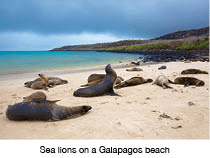
One of the first points that becomes apparent to any visitor to the Galapagos Islands who looks at the night sky is that the astronomy of the Galapagos is as interesting as the biology. In the Galapagos, away from city lights and pollution, one can get a full picture of the majesty of God's creation in the heavens. You can see the Milky Way clearly. We could see Jupiter, Mars, and Saturn clearly. We could observe the Magellanic Clouds (dwarf galaxies visible from the southern hemisphere) and spot the area where Supernova 1987A exploded in 1987. That was the first such sighting since the Chinese saw the Crab Nebula explosion in AD 1054. God's crucible to produce the heavier elements of which life is made is very clear when you are fortunate enough to have a totally cloudless sky.
Darwin's discussions were about biology, not the creation of the cosmos. The Galapagos are located on the equator. While we were in Quito we went to “Museo De Sitio Intinian” in which exhibits and demonstrations teach the uniqueness of being at the equator. We watched water go straight down the drain instead of spiraling down, and talked about the Coriolis effect which affects how the water behaves. We tried to balance an egg on a nail and talked about why that is possible at the equator. We talked about how much less we weigh at the equator than we do at the poles (due to increased centrifugal force). Even though there was some trickery involved in some of the exhibits, the fact that the earth is unique in its design is apparent. The message is that nothing Darwin did has anything to do with the actual creation of the earth. The creation of time, space, and matter/energy is not what Darwin was studying.
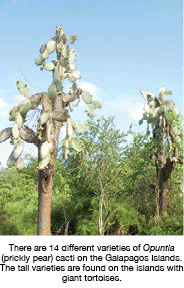
What Darwin WAS studying was the question of how animals came to be as we see them today. There are 13 species of finches scattered throughout the 13 main islands, six small islands, and 42 islets, where detailed studies of the finches have been conducted. One species also exists in Costa Rica. Bible teachers in Darwin's time maintained that God created each of the 13 species independently, and placed them where they live today. In addition to the finches there are iguanas which are not only found in the Galapagos, but also in Mexico, Fiji, Tonga, South Africa, and the Cayman Islands (just to name a few). These various iguanas are separate species because they cannot interbreed. Since they are members of the Saurian clade (ancestor and descendants) they are reptiles and must maintain their body temperature by exposure to the sun. The Galapagos Island iguanas which grow to be three feet long are infertile with the Galapagos marine iguanas. The marine iguanas feed on algae on the floor of the ocean and have a gland in their respiratory system that collects excess salt in their bodies and “sneezes” it away. Even the huge Galapagos tortoises, which can weigh over 500 pounds, are different on each island and infertile with the tortoises on other islands. There was much conversation when we were there because “Lonesome George,” a giant male from one island had recently died. His body was being shipped out to be preserved by a taxidermist because he was the last one of his species of tortoises to survive, being incapable of producing offspring with the other tortoises. Today our studies of DNA and the genomes of living things have shown how close these animals are to each other genetically. The incredible wisdom built into their DNA allows them to adapt and become unique for a particular environment. The research being done at the Charles Darwin Research Center is helping mankind understand how to control and protect all forms of life on this planet.
Again, in Darwin's day the claim of most theologians would have been that God created each tortoise separately, and placed each one on its island, and that they were unchanged to this day. What Darwin maintained was that there was a design system built into the animals which allowed them to change to fit the physical conditions in which they found themselves. Since genetics was not a functional science at that time, Darwin had no idea what the design feature was that allowed this natural change, but he maintained it was the explanation for the finches, iguanas, and tortoises.
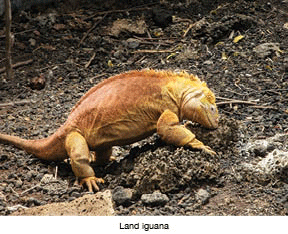
What was going on theologically in Darwin's day is essentially what is going on today. People had decided that the Bible was too radical to be believed. Not only did people not want to follow the Bible's teachings, but they considered it to be primitive ignorance to suggest that Genesis was true. If they had investigated the word “kind” in the Hebrew of Genesis they would have seen that it is a very broad term. Paul in 1 Corinthians 15:39 spells out what “kind” means: “there is one kind of flesh of men, another flesh of beasts, another of fishes, and another of birds.” This same breakdown is used in Genesis 1 when the flesh of fish (Genesis 1:21a), the flesh of birds (Genesis 1:21b), the flesh of beasts (Genesis 1:24), and the flesh of man (Genesis 1:26-27) are used. We now know that the genome of the iguanas contains enough stored information to allow the iguanas to live in a marine or land environment. The design of the genome is a fantastic demonstration of God's wisdom and design allowing the finches to live in every ecological niche the Galapagos has to offer. Even the tortoises have subtle physical characteristics that enable them to reproduce and live in particular habitats.
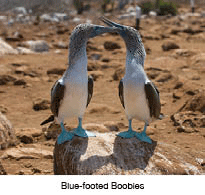
What impressed me about the work going on in the research stations we visited was that it was good science and not speculative theories and philosophies. Researchers were not looking for a link between the finches and the iguanas. They were concerned with understanding how the natural history of the Galapagos had shaped and was being shaped by the forms of life that exist there. In talking with researchers, I encountered no one who felt there was a conflict between what they were doing and faith in God and the Bible. We had a guide assigned to our boat by the governmental agencies. He was very knowledgeable, and expressed some wonderment that anyone would even suggest that somehow this area that he knew so well would be considered an area contributing to doubts about God and the Bible.
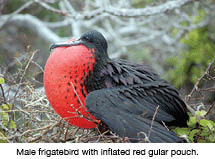
As we traveled from island to island we were able to see incredible numbers of birds — blue-footed boobies (which could dive at incredible speeds to get fish), cormorants (which cannot fly), flamingos, frigatebirds (who would steal fish from other birds), stilts, pelicans, hawks, and gulls. Each had special equipment ideally suited for the islands where they live. We got to scuba dive and see some of the 307 fish species plus sea lions and rays. On our last day we visited a bay nestled in the mangroves where dozens of giant sea turtles were grouped for mating. It is still a mystery as to what happens to the baby turtles from the time when they hatch to when they become large enough to safely swim in the open sea.
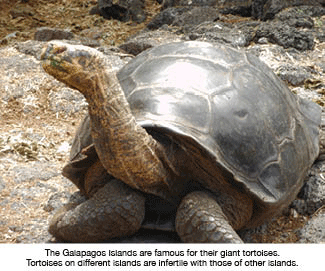

We have much to learn about how God has designed and created the earth and its living creatures. I recommend the Galapagos highly for those who wish to see what it was like when God said “It is good.” There is no reason to fear that one's faith will be destroyed, because the beauty and wisdom of God shines as brightly in the Galapagos as any place on this planet. Darwin's findings conflicted with the theology of organized religion in his day, but not with what God's word actually says. It is sad that in our day people have taken Darwin's work and attempted to exclude God from our thought processes as we study life on earth.
Picture credits:
Photo of Claytons provided by Cynthia Clayton.
Map: © Volina. Image from BigStockPhoto.com (some text added)
© Maridav. Image from BigStockPhoto.com
© Kjersti. Image from BigStockPhoto.com
Cynthia Clayton (2 photos)
© javarman. Image from BigStockPhoto.com.
© leospek. Image from BigStockPhoto.com.
Cynthia Clayton (2 photos)
